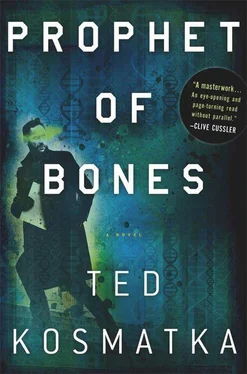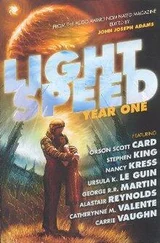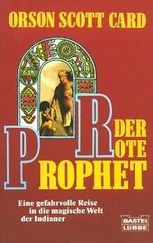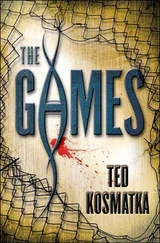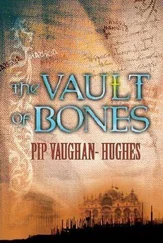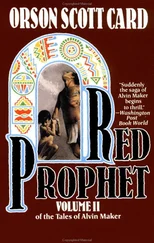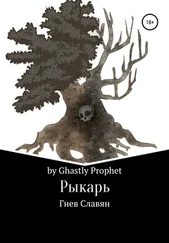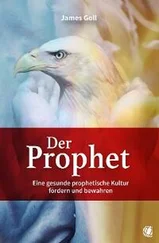Mice are social animals, and he found that within the large habitats, they formed packs like wolves, with a dominant male and a dominant female—a structured social hierarchy involving mating privileges, territory, and almost-ritualized displays of submission by males of lower rank. The dominant male bred most of the females, and mice, Paul learned, could kill each other. Mice could war.
Nature abhors a vacuum, and the mouse populations slowly expanded to fill the new territories he’d created for them. The habitats thronged. The babies were born pink and blind, and as their fur came in, Paul began documenting coat colors in his notebook. There were fawns, blacks, and grays. Occasional agoutis. There were Irish spotted, banded, and broken marked. In later generations, new colors appeared that he hadn’t purchased, and he knew enough about genetics to realize these were recessive genes cropping up.
Paul was fascinated by the concept of genes, the stable elements through which God provided for the transport of heritable characteristics from one generation to the next.
Paul did research and found that the pigmentation loci of mice were well mapped and well understood. He categorized his population by phenotype and found one mouse, a pale, dark-eyed cream, that must have been a triple recessive: bb, dd, ee. Three gene pairs lining up in just the right way, each diluting the coat pigmentation by a certain quantum, until you were left with a mouse with almost no coat pigment at all. But not an albino, because albinos had red eyes.
In November the school sent home an announcement about the science fair, which would be held in the spring.
“Are you going to participate?” his mother asked him as she signed the parental notification.
Paul shrugged. “If I can think of something,” he said. He knew instantly that his mice were the answer, though he wasn’t sure how exactly.
It wasn’t enough to just have them, to observe them, to run the Punnett squares. He’d need to do real science. He’d need to do something new. And because real scientists used microscopes and electronic scales, Paul asked for these things for Christmas. His parents were pleased with his sudden analytical interest and bought him what he asked for.
But mice, Paul quickly discovered, did not readily yield themselves to microscopy. They tended to climb down from the stand.
The electronic scale, however, proved useful. Paul weighed every mouse and kept meticulous records. He considered developing his own inbred strain—a line with some combination of distinctive characteristics—but he wasn’t sure what characteristics to look for. He imagined that his special new strain would be useful to science someday, a genetic model destined to play a role in some far-future discovery, but he didn’t know where to start.
He imagined winning the science fair. He imagined his father proud of him, clapping him on the shoulder with his big hand.
Paul was going over his notebook when he saw it. January-17. Not a date but a mouse, January-17. The seventeenth mouse born in January.
He went to the cage and opened the door. A flash of sandy fur, and he snatched it up by its tail—a brindle specimen with large ears. Over the previous several months he’d become good at handling the mice. It was a knack you picked up without realizing it—the ability to hold the mice softly, so that you didn’t hurt them, and yet firmly, so they couldn’t get away. This mouse was not particularly fast or hard to catch. There was nothing obviously special about it. It was rendered different from the other mice only by the mark in his notebook. Paul looked at the mark, looked at the number he’d written there.
Of the more than ninety mice in his notebook, January-17 was, by two full grams, the largest mouse he’d ever weighed.
* * *
In school they taught him that through science you could decipher the truest meaning of God’s word. God wrote the language of life in four letters: A, T, C, and G. A family of proteins called AAA+ initiated DNA replication, genetic structures conserved across all forms of life, from men to archaebacteria—the very calling card of the great designer.
That’s not why Paul did it, though: to get closer to God. He did it because he was curious.
It was late winter before his father asked him what he spent all his time doing in the attic.
“Just messing around,” Paul answered.
They were in his father’s car, on the way home from piano lessons. “Your mother said you built something up there.”
Paul fought back a surge of panic. The lie came quickly, unbidden. “I built a fort a while ago.”
Paul’s father glanced down at him. “What kind of fort?”
“Just a few pieces of plywood and a couple blankets. Just a little fort.”
“You’re almost twelve now. Aren’t you getting a little old for forts?”
“Yeah, I guess I am.”
“I don’t want you spending all your time up there.”
“All right.”
“I don’t want your grades slipping.”
“All right.”
“Your grades are what you should be focusing on right now, not screwing around with kids’ games in an attic.”
Paul, who hadn’t gotten a B in two years, said, a third time, “All right.”
The car slowed to a stop at a red light. “Oh,” Paul’s father added, almost as an afterthought. “There’s something else. I don’t want you hanging out with that girl from up the street.”
“What?” Paul said. “Who?”
“The Nearhaven girl.”
Paul blinked. He hadn’t realized his father knew.
His father added, “You’re getting too old for that, too.”
The light turned green.
They rode the rest of the way in silence, and Paul explored the walls of his newly shaped reality. Because he knew foreshocks when he felt them.
He watched his father’s hands on the steering wheel.
Though large for his age, like his father, Paul’s features favored his Asian mother; he sometimes wondered if that was part of it, this thing between his father and him, this gulf he could not cross. Would his father have treated a freckled, blond son any differently? No, he decided. His father would have been the same. The same force of nature; the same cataclysm. He couldn’t help being what he was.
Paul watched his father’s hand on the steering wheel, and years later, when he thought of his father, even after everything that happened, that’s how he thought of him. That moment frozen. Driving in the car, big hands on the steering wheel, a quiet moment of foreboding that wasn’t false but was merely what it was, the best it would ever be between them.
Winter stayed late that year in the land of marshes and highways. A mid-March storm came howling down across Lake Michigan, laying waste to an early spring thaw. Murdered stalks of corn jutted from the snow, turning roadside farms into fields of brown stubble.
On most days, Paul lingered inside after school. But on some afternoons when his father wasn’t around, Rebecca would meet him, and on those days the two of them ventured into the woods. They explored the frozen marshes that sprawled behind the back fence of the subdivision—a wild place beyond the reach of roads and sidewalks and parents.
Instead there were cattails, and sway-grass, and old-growth oaks. Dark water hidden under whole plains of snow. And the marshes extended for miles.
On that cold Saturday afternoon, Paul and Rebecca walked the trail down to the river. The morning had dawned cold and windy—northern gusts raking through the trees, a twenty-degree temperature drop from the day before. Their breath made smoke on the frigid air. They didn’t speak as they walked; it was too cold to speak. They rounded a final bend in the trail, and the river lay before them: the Little Cal—a blank white ribbon that cut a swath through the heart of the wetland snowscape. Stubborn patches of dogwood and black oak clung to the riverside floodplain. In the spring, Paul knew, whole acres of lowland marsh would be transformed, submerged, become river itself. But in the cold months, the river retreated to its banks, dug deep, and capped itself over in ice.
Читать дальше
